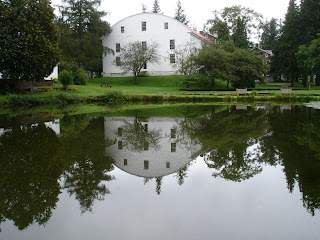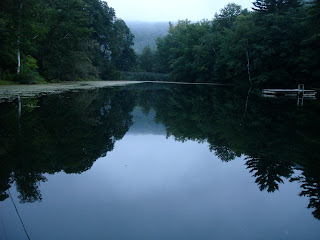Consider the lilies of the field...
I did.
The roadsides of my home state, Wisconsin are infested with the “ exotic “ day lily (Hemerocallis sp.) It’s orange flowers among the tall grass, goldenrod and Queen Anne’s Lace bring a reliable cheerfulness to these “ wasted” waysides. That they hunkered into this melange of natives and weeds along the side of the road was magical. Impressed me.
In one particularly unemployed summer, while I was studying botany, I picked huge bundles of orange day lilies from an abandoned cemetery. I sat with them on a street corner in a posh neighborhood and sold them until a store owner chased me away. But I had already made enough money from my wild booty to take a friend out to dinner and drink myself silly. College days are far behind but day lilies stayed.
As reliable long term perennials, day lilies are indispensable. But not without problems.
Daily deadheading to keep them looking clean, to show off each flower as it opens is a must in the estate gardens I maintain. The spent blossoms never drop or if they do they get tangled in the flower-scape, rarely making it to the ground.
The gardener Jon Dove loathes day lilies for this reason and even more so for their rank and floppy foliage ( right when they begin to bloom!)
I am enamored with the lily family. I can’t stop planting tulips, lilies, alliums, and day lilies in my borders. I curse them each year for their problems, mostly fungal here in the Northwest. They deliciously tempt deer and rabbits, and rats dung and gnawed my tulips bulbs. But I keep planting members of this family because I am so in love with their beauty I’ll put up with all the problems.
The same is true for day lilies. As the summer parties approach and the foliage browns and drops I realize I should have listened to Christopher Lloyd who warned of planting too many.
I planted too many.
This year I have pledged to edit. But I’m still glad I planted the 12+ cultivars I did. I had a chance to look at which ones works and which ones don’t.
Here’s my list.

‘Guardian Angel’, has lovely cream colored flowers, I grow it in half shade. Unfortunately the foliage lies flat on the ground by the time the flowers bloom.

‘ Big Bird’, these giant yellow flowers stop everyone walking through the garden. It’s tall enough to plant in the back to cover any foliage mishaps.

‘College Try’, a strong red that blooms and holds well even in the dry part-shade where I planted it.

‘Fairy Tale Pink’, Beautiful! The flower is a taffy pink, lovely in morning light, makes it worth growing despite the lanky foliage. Maybe I’m growing it too moist.

‘Lime Frost’, This superb day lily had strong upright foliage to the end. The large amaryllis-like flowers are a sophisticated pale yellow, almost white, with a green throat. It elegantly blends with anything you put it near. By far my favorite.
My plans for the day lilies in the borders includes deletions and moves. But Michael and I also plan to try more cultivars at the farm. Our own little trial garden, where daily dead-heading won’t be a must and I can finally surrender fully to my day lily obsession.











































